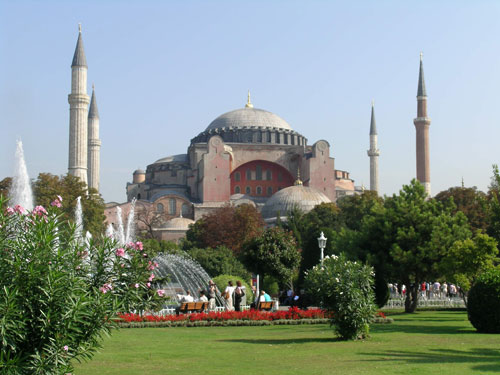394.002
Special Topics in Byzantine Art: The Art and Architecture of Byzantine Constantinople: 330- 1453
TTh 10:00-11:30am
180 Tappan
3 Credit Lecture. Meets with CLARCH 350.002

This lecture course surveys the art and architecture of Late Antiquity and Byzantium with a special focus on Constantinople, the capital of the Byzantine Empire for over 1000 years. This course will begin with the first Christian Emperor Constantine I, and his move of the imperial capital from Rome to Constantinople in 330 AD, and end with the collapse of the Byzantine Empire in 1453 with the conquest of Constantinople by the Ottoman Turks. Within this long range in history, Byzantine art and architecture can be divided into three main chronological phases: early (4th - 6th centuries), middle (7th -12th centuries), and late (13th -15th centuries). Byzantium directly inherited Greco-Roman art and architecture from classical antiquity to produce a uniquely east, Christian art. The Roman civic basilica became the new Christian church, and Roman vault techniques soared to new heights with the dome of the Hagia Sophia rebuilt in the sixth century. The only imperial capital to ever span two continents, Europe and Asia, Constantinople's famous land walls were breached only once in their one-thousand year history. All who visited this Queen of Cities during the Middle Ages marveled at its colonnaded porticoes, bustling markets, and glittering churches. We will discuss a range of themes including the inheritance and transformation of the classical tradition; empire-building and the urban development of Constantinople; arts of the capital as they relate to the empire's provinces; developments in Byzantine church architecture and its decoration; civic and religious ceremonials in their urban context; the form and function of portable religious and luxury arts such as icons, relics, manuscripts, and metalwork will be studied using a contextual approach; the design, technique, patronage and reception of Byzantine works of monumental and portable arts, including the meaning and significance of sacred and secular spaces, will also be considered. A,D.2

